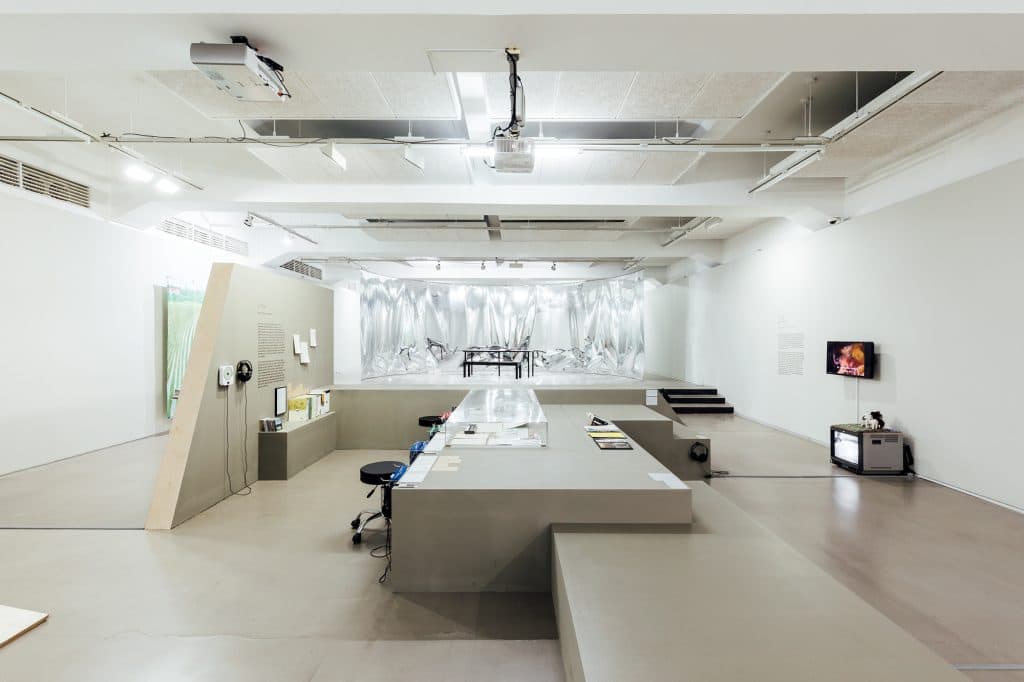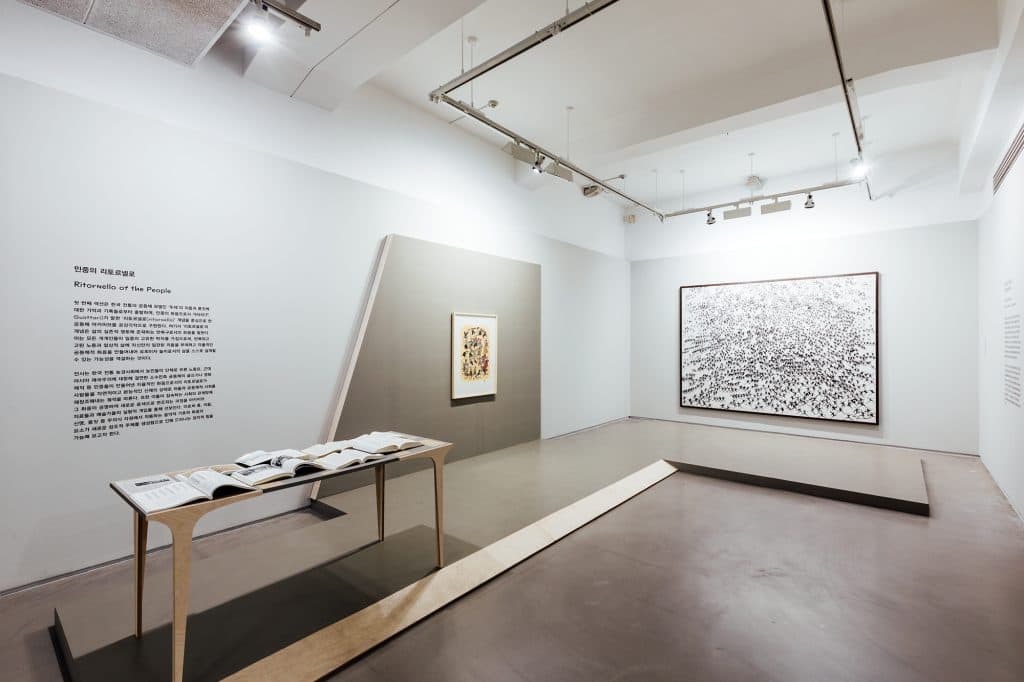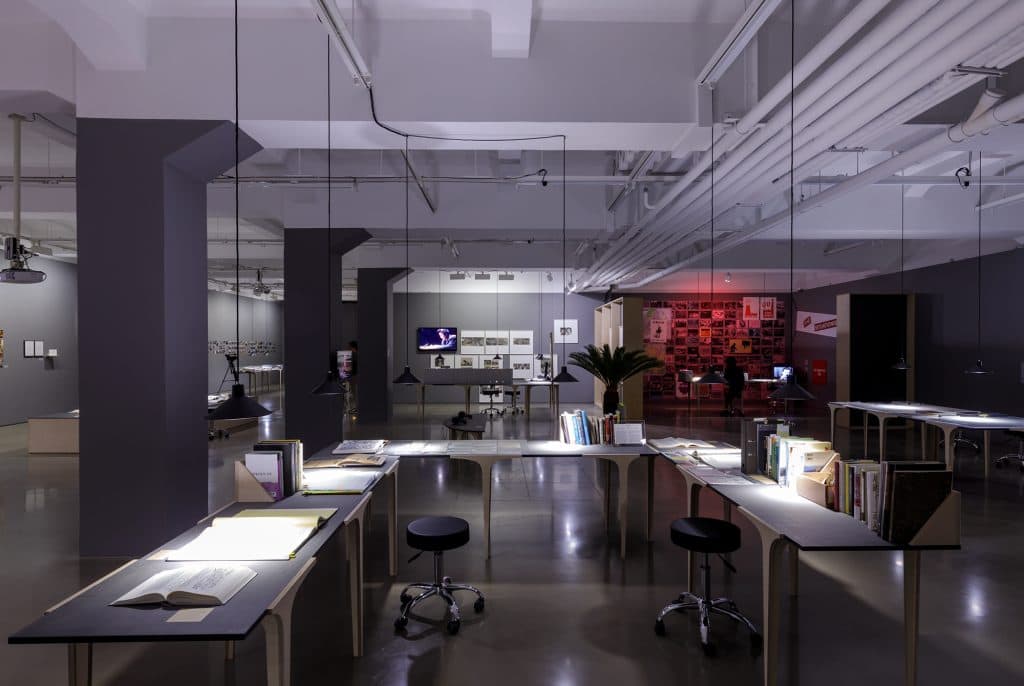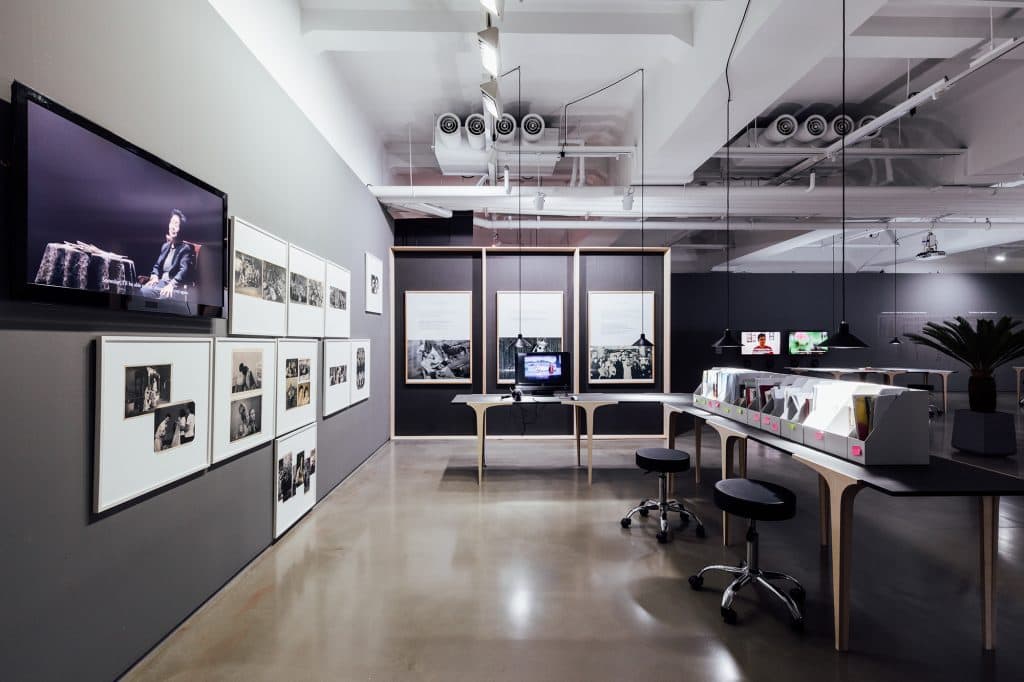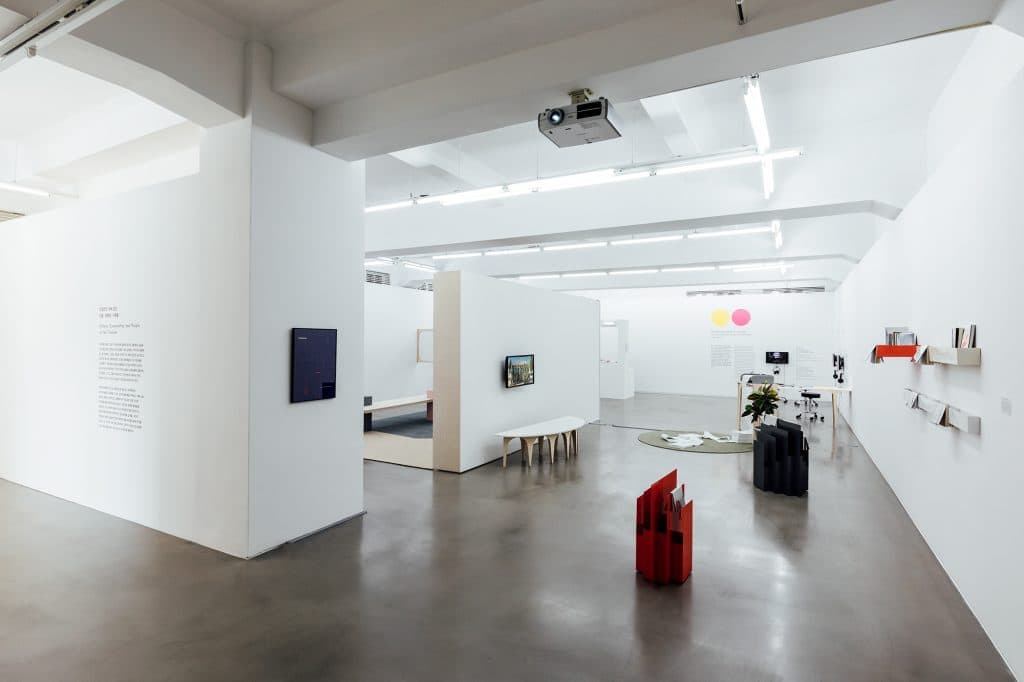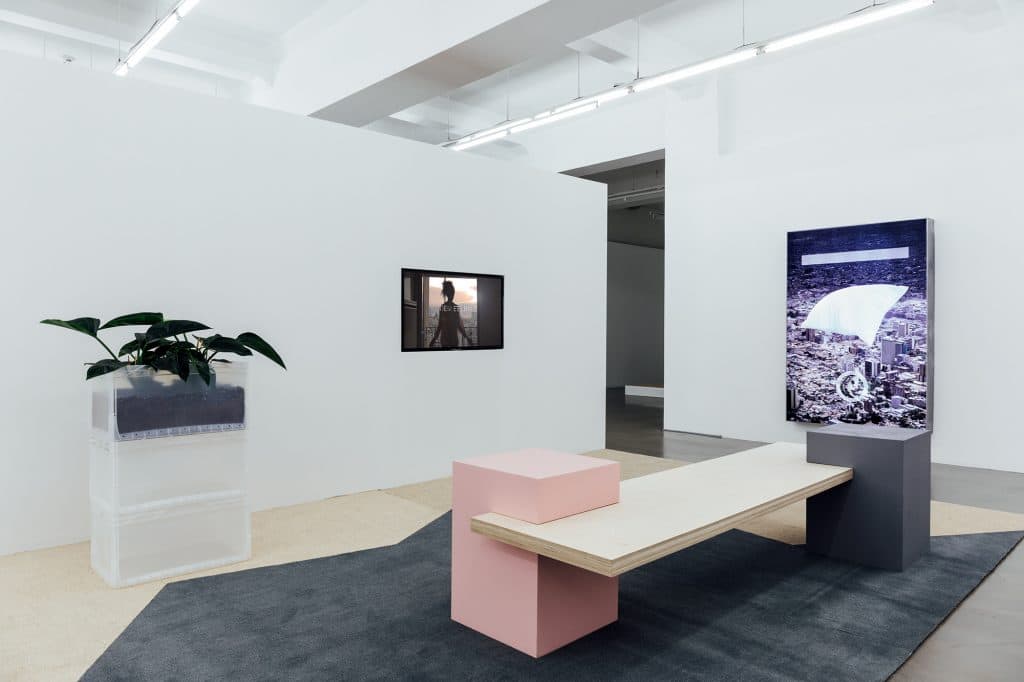소리와 춤, 리듬의 아카이브/ 기록되지 않은 민중들의 역사
예술가, 인문 사회학자, 민요연구가, 다큐멘터리 감독 등의 아카이브 + 디자인 그룹, 사회적 기업, 인터넷 라디오 등을 매개로 한 새로운 형태의 커뮤니티
고대부터 오늘날까지 변화해온 다양한 형태의 ‘공동체’에 관한 아카이브 전시로, 소리와 춤, 리듬과 같은 무의식 차원에서 작동하는 음악적 기호와 화음의 요소를 중심으로 기록되지 않은 민중의 역사에 주목하고, 산업화, 도시화된 사회에서 현대인들이 자신들의 삶을 자율적인 공동체적 화음을 통해 유희이자 놀이로서 설계할 수 있는 가능성을 탐구한다.
일민미술관(관장:김태령)은 오는 9월 15일(금)부터12월 3일(일)까지 «공동의 리듬, 공동의 몸» 공동체 아카이브展을 개최한다. 이 전시는 고대부터 오늘날까지 변화해온 다양한 형태의 ‘공동체’에 관한 아카이브 전시로, 소리와 춤, 리듬과 같은 무의식 차원에서 작동하는 음악적 기호와 화음의 요소를 중심으로 기록되지 않은 민중의 역사에 주목한다. 또한, 산업화, 도시화된 사회에서 현대인들이 자신들의 삶을 자율적인 공동체적 화음을 통해 유희이자 놀이로서 설계할 수 있는 가능성을 탐구하고자 기획되었다. 전시는 한국 전통의 공동체 모델인 ‘두레’의 리듬과 몸짓에 대한 기억과 기록들로부터 출발하여, 민중의 화음으로서 가타리(F. Guattari)가 말한 ‘리토르넬로(ritornello)’ 개념을 중심으로 한 공동체 아카이브를 공감각적으로 구현한다. 여기서 ‘리토르넬로’의 개념은 삶의 실존적 영토에 존재하는 반복구로서의 화음을 말한다. 이는 모든 개개인들이 일종의 고유한 박자를 가짐으로써, 반복되고 지루한 자본주의 체제 하의 노동과 일상적 삶에 자신만의 일관된 리듬을 부여하고 스스로 화음을 만들어내면서 유희이자 놀이로서 삶을 설계할 수 있는 가능성을 역설하는 것이다.
이번 전시는 자율적인 화음으로서의 리토르넬로가 사람들을 “본능적”인 신체들의 자연적 상태로 되돌려 공동체적 사회를 재창조해내는 궤적을 따른다. 또한, 그것과 접속하는 사회의 관계망에 이들의 화음이 공명하여 새로운 음색으로 변조되는 과정을 사회학적, 역사적, 철학적, 문화인류학적 방식의 아카이브 자료들과 회화, 영상, 디자인 등 시각예술가들의 실험적 개입, 그리고 음악, 연극, 안무 퍼포먼스 및 워크숍을 통해 선보인다. 이로써 전통적 공동체에서 보여진 흥, 리듬, 신명, 몸짓과 같은 자연스러운 민중의 욕망을 현실 적합한 형태로 변형하고, 무의식 차원에서 작동하는 음악적 기호와 화음의 요소를 통해 새로운 창조적 주체를 생성할 수 있는 정치적 가능성을 보여주고자 한다. 이것이 변화한 사회적 조건에서 우리 사회에 도래하게 될 새로운 공동체 모델이라 본 것이다.
총 3개의 섹션으로 구성된 이번 전시에서 1 전시실은 전통적 공동체와 미래의 공동체 개념이 혼재된 채 사람들의 자연스러운 움직임을 유도하는 ‘광장’과 같은 무대를 제시하고, 소리와 춤, 리듬의 아카이브들을 구현하여 과거의 공동체 기억들을 현재에 재구성하는 ‘퍼포먼스 아카이브’의 형식 뿐 아니라, 영상, 사운드 레코딩, 인터뷰 ,사진, 악보, 연구자료, 시각예술 오브제 등을 무대 곳곳에 설치하여 역사에 기록되지 않았던 민중들의 역사를 새로운 아카이브 방법론으로 제시하고자 한다. 이어, 2전시실에서는 근대 산업자본주의와 동시대 글로벌 자본주의라는 전체 사회적 조건과의 연계속에서 공동체의 개념을 다루며, 전통적 ‘공동체’의 개념과 대비되는 ‘사회적 공동체’와 ‘정치적 공동체’를 시각화하여 전시한다. 이를 위해 근대 이후 공동체성에 대한 인문 사회과학 등 각 분야의 연구자들이 바라보는 다양한 관점들을 각 연구자들의 아카이브를 중심으로 구성하는 한 편, 문화기술지적 특성을 지닌 동시대 예술가들의 활동을 개입적으로 구현한다.
마지막으로, 3전시실에서는 21세기 한국사회에 새롭게 등장한 공동체의 모습들—SNS 중심으로 전개되는 정치 공동체, 취미 공동체, 지역사회 공동체 등을 관찰하고, 오늘날 새로운 사회적 조건 하에 등장한 일시적이고 임의적인 동시에, 불확정적이며 변화무쌍하고 모호한 공동체들이 지닌 특성들을 시각화한다. 이를 통해 오늘날 공동체들이 구성원 개개인의 일상적 삶과 깊숙하게 연관되며, 인간적 관계의 회복과 상호작용에 집중하게 된 현상들, 그리고 그렇게 우발적이고 자연스럽게 이루어진 연대 안에서 드러나는 긴장과 모순을 핵심적으로 보여주고자 한다.
따라서 본 전시는 포스트정치(post-politic) 시대 이후 부각된 새로운 공동체성에 관한 관심을 기조로 하여, 아카이브 중심의 무대 구성을 통해 한국의 전통적 공동체의 원형을 재배치하며, 근대 산업화, 도시화 과정에서 인위적으로 구축된 공동체들의 문화인류학적 탐색을 통해 미래에 지속가능한 공동체를 향한 조건은 무엇인지 탐구하는 것이다. 궁극적으로 전시를 통해 일시적, 임의적 공동체 안에서 개인이 제도와 배치의 기원으로서의 ‘나’ 자신의 이야기를 스스로 조직하며, (역사적) ‘타자’와 동등한 관계의 가능성을 가정하도록 동기를 부여하게 될 것이다.
참여작가
강현선, 김다움, 김온, 김준, 니키 S. 리, 심철웅, 오윤, 오재우, 옥인콜렉티브, 유스케 카마타, 이미연, 이우성, 이응노, 이인규, 정은영, 차재민, 크리스토프 슐링엔지프, 크리스토퍼 쿨렌드란 토마스, 파일드-타임라인, 한받 (이상 시각예술가, 디자이너, 음악가)
김백영, 김소영, 박해천, 서동진, 양효실, 이소라, 조은, 조한혜정 (이상 사회학, 역사학, 철학, 문화인류학, 민요, 디자인, 영화 분야 연구자)
김성배, 김온+김태용+배수아+정영문+하재연, 미디액트, 불만합창단, 안은미, 야마가타 트윅스터, 이희문, 정은영+남은진+지보이스, 트랜스:아시아영상문화연구소, 홍상표 (이상 음악, 안무, 연극 퍼포먼스 및 워크숍, 강연, 인터넷라디오방송)
장소
일민미술관 1, 2, 3 전시실
주최
일민미술관
후원
서울문화재단, 현대성우홀딩스
전시기획
조주현(일민미술관 학예실장)
전시기간
2017년 9월 15일(금) ~ 12월 3일(일)
관람시간
오전 11시 ~ 오후 7시 (매표마감 6시 30분)
* 매주 월요일, 추석 당일 (10월 4일, 수요일) 휴관
관람료
일반: 성인 5,000원 학생 4,000원
신문박물관 통합권: 성인 6,000원 학생 4,500원
단체(20인 이상): 성인 4,000원 학생 3,000원
Urban Ritornello: The Archives on Community is an archival exhibition concerning a variety of “communities” that have changed since ancient times. Records of such communities are not usually kept in historical literature or historical sources but are mostly anchored in people’s memories and oral statements or are left behind as traces engraved in the domain of life, such as sounds, dances, and rhythms. This exhibition presents the archives artistsand researchers in an extensive range of fields such as humanities scholars, sociologists, folk song researchers, documentary directors, and design groups have created from their own multifarious perspectives. This event attempts to shed a new light on knowledge culture that comes from below and the undocumented history of people while standing up to institutionalized norms and established historical facts.
It is also intended to pay heed to quotidian aspects and social phenomena that have changed as conventional communities including nations, people, and society are replaced with temporary, arbitrary, and indeterminate communities formed by new media, especially social networking services (SNS). The exhibition also poses questions concerning the communities that will develop after contemporary people’s lives and relational networks have evolved into a completely different dimension due to new sensibilities, perceptions, and emotions. This also presents a new utopia, i.e. a new community in which an individual engenders his or her own narrative and reconstructs a group’s existential placement as the subject of institutions and arrangements within a community.
Ritornello of the People
Starting from the memories and records of dure, or traditional Korean small farming communities, the first section synesthetically incarnates the archives on communities, focusing primarily on the concept of “ritornello” that Felix Guattari defines as the people’s chord. “Ritornello” in his sense refers to a “chord” as a refrain that is the existential territory of life. It stresses the possibility in which each individual is able to design their own life as an amusement or play by having their own rhythms, lending their own consistent rhythms to hard labor and daily routines, and engendering autonomous and communal chords.
This section traces the process of ritornellos as autonomous chords by people and how they recreate communal society by bringing people back to their natural and instinctive physical state. They can be found in work folk songs sung by peasants in traditional Korean agricultural society, writings by minorities that confront modern Asian imperialism, and movie making. This section also demonstrates the course in which chords are morphing into new sounds using archived materials and the experimental involvement of artists. In doing so, it intends to gauge political power disclosed as musical signs and chordal elements that work in an unconscious dimension much like how excitement, rhythm, and gesture bring forth a new creative subject.
Citizens, Refugees, and Displaced People: Scenarios of Coexistance and Antagonism
This section features the visualization and exhibition of both “social communities” and “political communities” in contrast with the concept of traditional communities. It goes on to address the notion of communities in connection with modern industrial capitalism and contemporary globalized capitalism. The multifarious concepts of communities have been molded in a way that reflect social crises such as severance, alienation, and conflict caused by industrialization in modern times. This section takes note of a wide array of cultural movements spearheaded by minorities who have resisted against suppression, norms, and order, showcasing the disintegration of traditional communities through the concept of modernity.
This section brings into the spotlight bookcases and archiving tables with research materials (books, audio and video materials, pictures, maps, notes, sketches) produced by sociologists, historians, philosophers, activists, designers, and artists who have researched modern communities. The act of reviewing their research materials may be a dynamic process of reconstructing archives by viewers in a way that is completely different from that of viewing well arranged and well constructed materials.
Their archives are concerned with descriptions of the movements of people who have confronted modern domination structures like states, governments, and power as well as the forums of tension and struggle in modern communities. They also review subcultures that have resisted against mainstream culture, international situationism, and activism. In addition, they shed light on another modern history molded from the bottom by enabling viewers to look into aspects of hierarchical life that is fraught with division and alienation in capitalist society.
Villages, Communities, and People on the Timeline
The third section is an observation of newly emerged communities in 21st century Korean society – political communities, hobby communities, and local communities – and a visualization of the hallmarks of such temporary, arbitrary, ever-changing, and vague communities that have appeared under new social circumstances. It is also a multilateral showcase of the phenomena in which today’s communities are closely bound up with each individual’s everyday life and concentrate on the recovery of human relationships and interactions as well as the tension and contradiction revealed in accidentally and naturally attained solidarity.
In this context, this section constructs a practical platform that can visualize extemporaneously produced and reconstructed archives. It displays community activities spontaneously conducted through a variety of media such as Facebook, Twitter, YouTube, podcasts, and local community radio broadcasting. It also provides viewers with a public site where viewers themselves can organize their own narratives, exchange views on social issues and concerns, and raise their own voice by presenting artistic practices conducted both online and offline based on this new media environment and web projects involving numerous individuals.
Artists
CHA Jeamin, Christoph Schlingensief, Christopher Kulendran Thomas, filed-timeline.xyz, HAHN Vad, KANG Hyunseon, KIM Daum, KIM Joon, KIM On, LEE Inkyu, LEE Miyeon, LEE Ung-no, LEE Woosung, Nikki S. LEE, O Yoon, OH Jaewoo, Okin Collective, SIM Cheol-Woong, siren eun young jung, YUSKE Kamata
Researcher’s Archives
CHO (HAN) Haejoang, CHO Uhn, KIM Baek Young, KIM Soyoung, PARK Haecheon, SEO Dongjin, YANG Hyosil, YI so-ra
Performance,Workshop
AHN Eun-Me, Complaints Choirs, HONG Sang Pyo, KIM Sungbae, LEE Hee-Moon, Mediact, siren eun young jung+NAM Eunjin+G-Voice, Trans: Asia Screen Culture Institute
Venue
Gallery 1, 2, 3
Organized by
Ilmin Museum of Art
Supported by
Seoul Foundation for Arts and Culture, Hyundai Sungwoo Holdings
Curated by
Cho Juhyun


